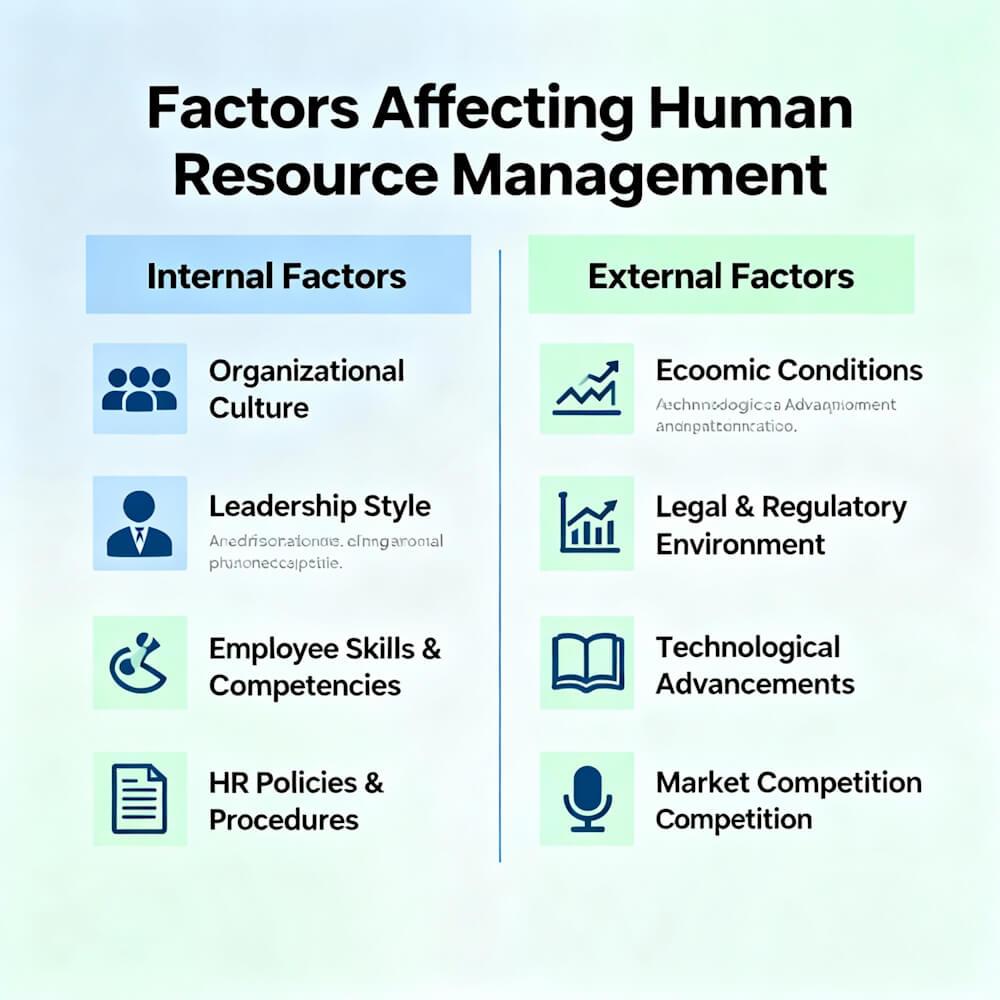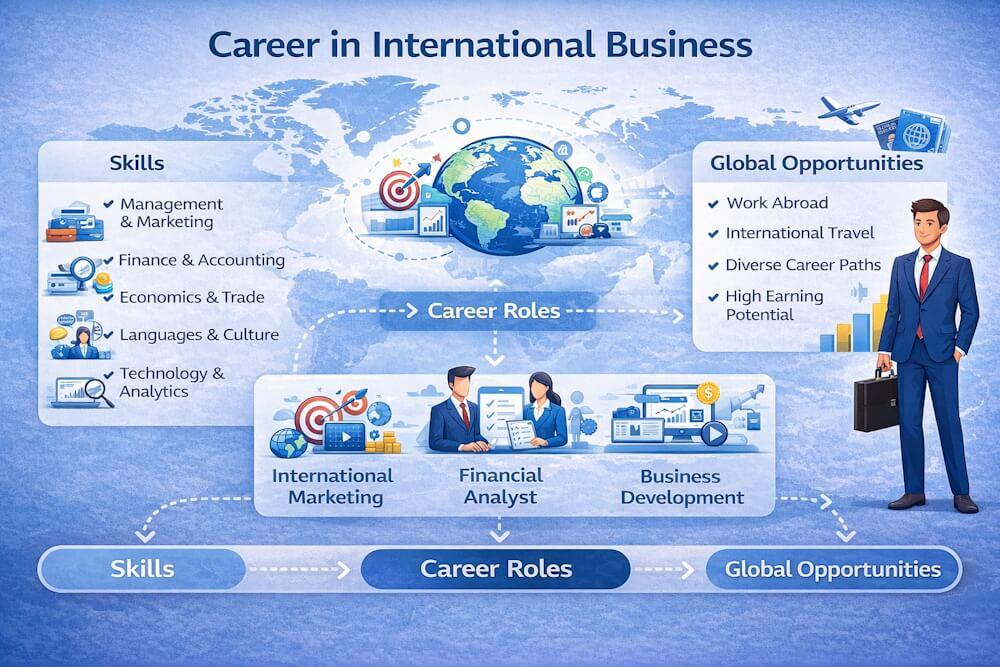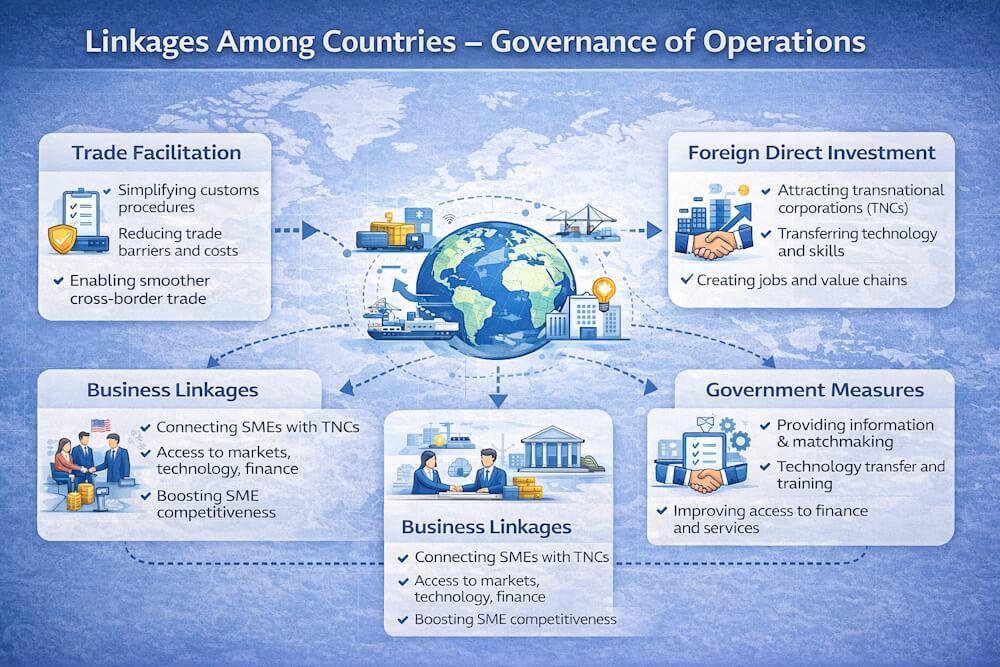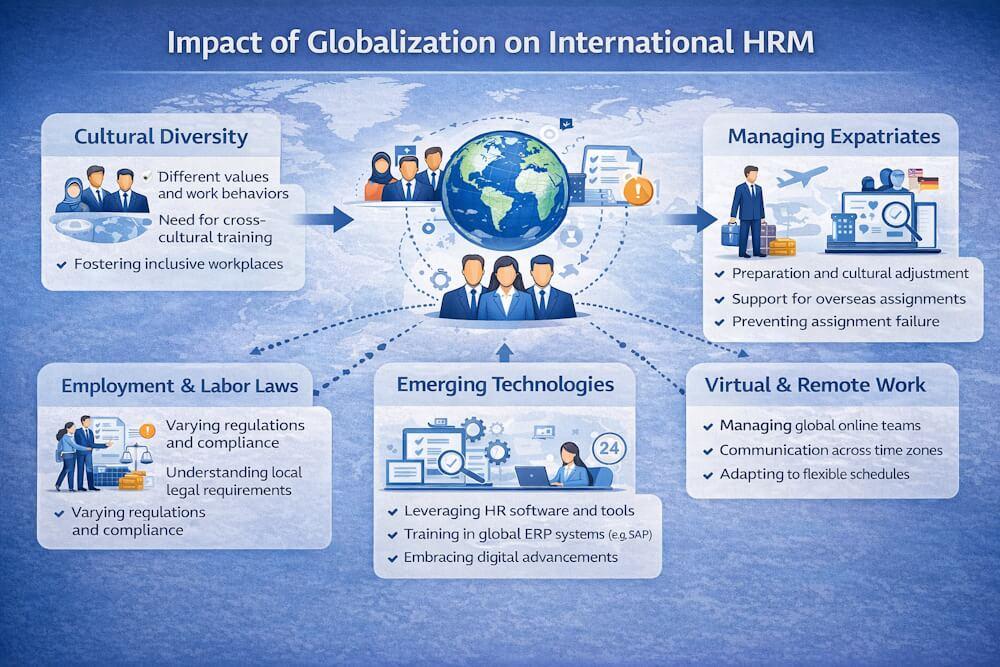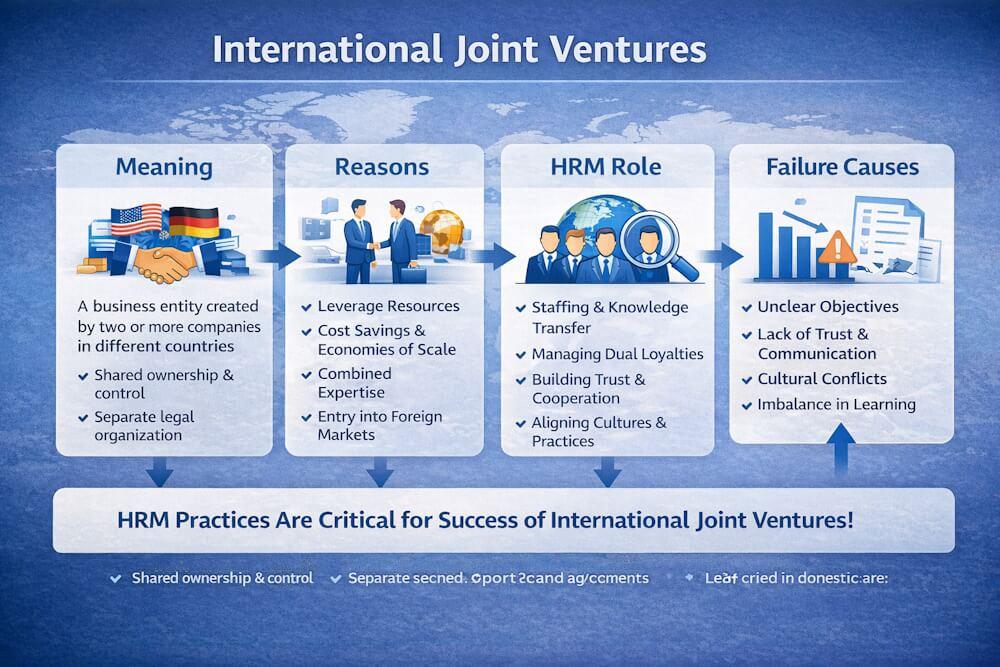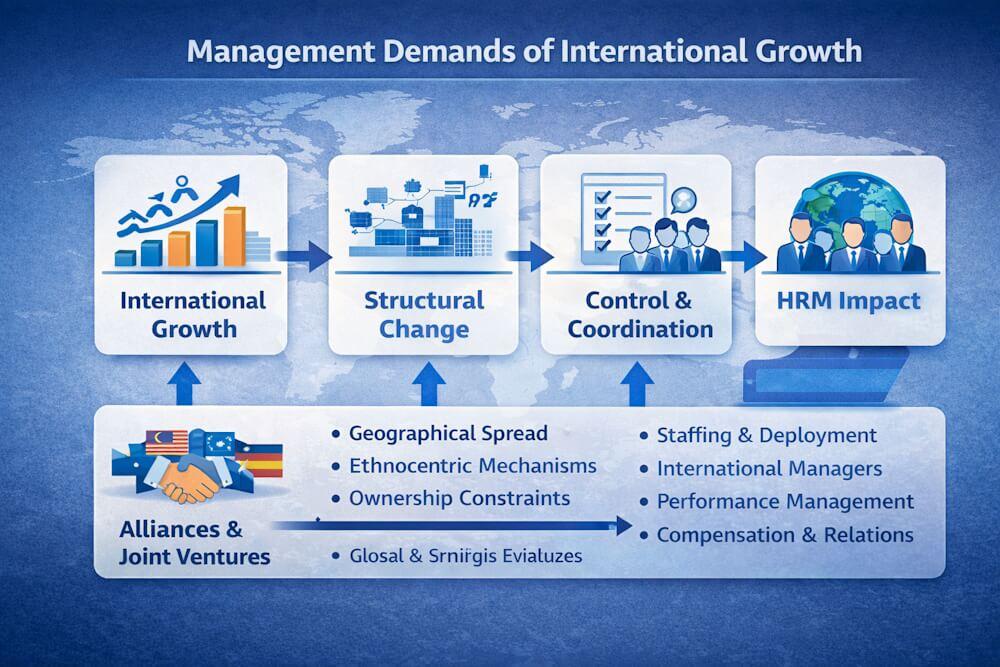Everything you need to know about human resource management's numerous elements. Human resource management is a component of the overall system of an organization.
When a subsystem is taken for study, however, it is viewed as a system since it contains system-like characteristics. A system functions in the context of its surroundings. The environment of a system is comprised of all external aspects that influence the system's operation.
There are two types of environmental elements in human resource management: external and internal.
- External variables, such as human resource management, are all aspects that exist outside of an organization and affect its operations.
- Internal factors that affect human resource management are referred to as internal factors.
Classification of Factors in Human Resource Management
Learn about the external and internal elements that have an impact on human resource management.
External Factors
- Economic Factors
- Socio-Cultural Factors
- Technological Factors
- Political-Legal Factors
- Growing Strength of Trade Unions
- Growth of Management Theories and Approaches
Internal Factors
- Organization’s Strategy
- Organizational Culture
- Trade Unions
- Organization’s Financial Position
Internal and External Factors Affecting Human Resource Management
Human resource management is a component of the overall system of an organization. When a subsystem is taken for study, however, it is viewed as a system since it contains system-like characteristics.
The environment of a system is comprised of all external aspects that influence the system's operation.
Because an organization cannot control external elements but can control internal factors, the classification of environmental factors into two groups is critical.
External Factors Affecting Human Resource Management
External factors include economic, socio-cultural, technological, political-legal, and professional association issues. These variables have a variety of effects on human resource management.
1. Economic Factors
Economic factors comprise the characteristics of the economic system, general economic conditions, numerous economic policies, and various factors of production, including human resources, that shape and form the growth of economic activity.
Population and workforce, labor market conditions, national income, and inflationary pressures are all elements that influence human resource management techniques.
i. Population and Workforce
Human resource management is influenced by population and workforce because these are the foundations for an organization's external supply of human resources.
Organizations should distinguish between workforce and population when considering population and workforce as a source of external human resources because only a portion of the population is eligible to work.
The eligible workforce can be separated into:
- Workforce reserve (those not working for a living, such as homemakers, students, etc.)
- Workforce (available employees)
ii. Workforce Market Condition
The labor market shows the demand and supply of labor. It affects recruitment and selection in HRM. The relevant workforce market is defined by: a. Profession – required credentials and abilities b. Geography – willingness to relocate or commute c. Industry – businesses offering similar products/services
iii. National Income
At the macro level, national income, particularly per capita income, affects wage/salary structure. Each employer must connect their wage/salary system with the macroeconomic environment.
iv. Inflationary Pressures
Inflation influences employee pay and cost-of-living adjustments. Example: In India, dearness allowance is linked to the cost-of-living index, which rises with inflation.
2. Socio-Cultural Factors
Socio-cultural issues include attitudes, beliefs, aspirations, expectations, and practices of the society at a given time.
These factors influence:
- Societal expectations of organizations
- Attitudes toward job status and work achievement
- Attitudes toward authority, responsibility, and hierarchy
- Workforce mobility
- The role of unions in HRM
Influence on Human Resource Management:
- Organizational Culture Alignment: - HRM techniques must align with socio-cultural norms; otherwise, incentives and strategies may fail.
- Union Role: - Socio-cultural perception of unions determines their bargaining power and influence in HR decisions.
3. Technological Factors
Technological factors include the total knowledge that allows people to perform things differently — including ideas and procedures affecting product design, production, and distribution.
Technology affects HRM by:
- Defining the nature of work
- Influencing HRM techniques
(i) Defining Nature of Jobs
Technology determines the skill requirements of employees. For example, knowledge-based organizations like IT firms need knowledge workers, while industrial companies may need machine operators or engineers.
(ii) Affecting Human Resource Management Practices
- Recruitment & Selection: - Online job postings, virtual interviews, and electronic communication streamline hiring.
- Training & Development: - E-learning, VDTs, and remote training have revolutionized employee skill development.
- Communication: - Open-door communication via emails and intranet encourages transparency.
- Employee Monitoring: - Technology enables global monitoring of employee performance.
- Work-Life Balance: - Virtual offices and remote work help maintain employee work-life balance.
4. Political-Legal Factors
Political-legal issues include government policies, political stability, and legal frameworks influencing business operations.
Effects on HRM Practices:
- Government policies related to HRM must be followed by organizations.
- No discrimination based on gender, caste, religion, or origin.
- Reservation for backward classes and differently-abled individuals.
- Adherence to Acts related to wages, safety, and labor relations.
These Acts limit flexibility in HRM, compelling organizations to comply with legal standards.
Internal Factors Affecting Human Resource Management
Internal or organizational factors shape HRM strategies within a company. HRM operates within the organization’s broader vision and strategy.
The major internal factors include:
- Organization’s Strategy
- Organizational Culture
- Trade Unions
- Organization’s Financial Position
1. Organization’s Strategy
HRM challenges are derived from an organization’s strategy. A company’s human resources must align with strategic goals.
Strategy operates on three levels:
- Corporate Level: Defines “what business should we be in?”
- Business Level: Focuses on “how do we compete in the market?”
- Functional Level: Answers “how do we contribute to business goals?”
Thus, HR strategy must align with overall corporate and business strategies.
2. Organizational Culture
Organizational culture is the set of assumptions, beliefs, values, and norms shared among members.
Culture influences HRM practices through both abstract and material aspects:
- Abstract: Values, beliefs, attitudes, emotions
- Material: Buildings, dress codes, workspaces
Differences in HR Practices Based on Culture:
- In high-performing cultures, HR practices align with strategic management; low-performing ones lack this connection.
- HR is treated as a strategic resource in high-performing cultures.
- HR professionals collaborate closely with line managers in effective cultures.
- High-performing cultures emphasize internal promotions and development.
- Performance management is person-oriented in high-performing cultures, and job-oriented in low-performing ones.
3. Trade Unions
Trade unions, though separate, act as internal factors since employees are members. They influence:
- Recruitment
- Development
- Compensation
- Maintenance
- Industrial relations
Collective bargaining outcomes depend on the bargaining power of unions. If unions are strong, HR practices must align with union demands, even if unfavorable to management.
4. Organization’s Financial Position
Financial health directly impacts HRM practices — especially those requiring monetary resources.
- Strong finances allow bonuses, training, and incentives.
- Weak financial conditions lead to layoffs or cost-cutting.
Despite claiming that “employees are assets,” many firms treat HR as a cost center, reducing workforce during downturns.
Employee stock options, profit-sharing, and performance incentives thrive in financially stable organizations.
Conclusion
Both internal and external factors play a vital role in shaping Human Resource Management practices. While external factors like economy, technology, and law are beyond an organization’s control, internal factors such as culture, strategy, and finances can be managed effectively to ensure organizational success.
